Versions in Adaptive Insights. What are they? How best do you, as an administrator, manage them? And what other, lesser-known features of versions can you leverage to create a more intuitive and bespoke planning experience?
A version is simply a collection of models and data that represents a financial scenario of your business. Your Last Year Budget, Current Month Forecast and Long-Range Targets are all examples of versions, which are created, populated and analysed in Adaptive Insights.
Go to Modeling > Versions to see your versions and their settings:
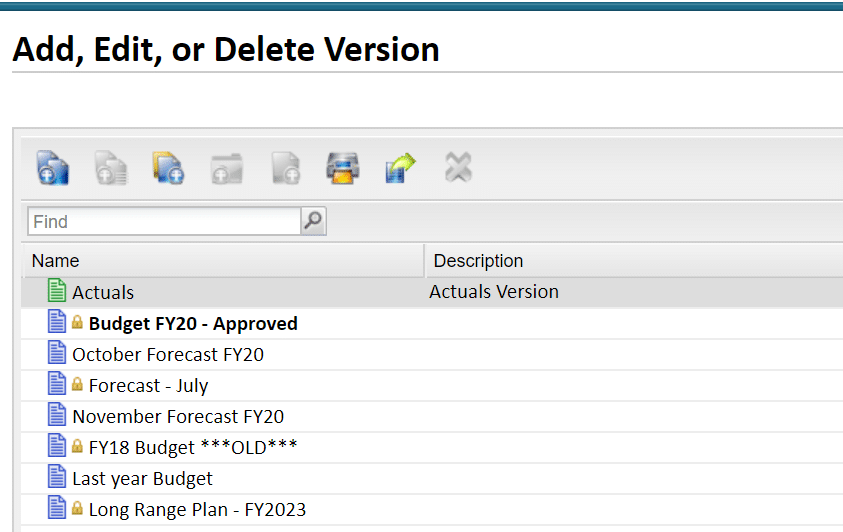
The number of versions in your Adaptive model doesn’t have a material impact on its performance, so you’re welcome to create as many versions as you’d like.
However, the more versions you keep, the more important it is to store them in a clear, organised way. This avoids confusion for your users when contributing to budgets and running reports.
How often do you get emails from your contributors with questions such as “What’s the current version again?”, “Which budget version should I use for variance reports?” or, the dreaded “I’ve entered data into the wrong version, can you help?!”.
Organising your Active Versions
Alleviate yourself from those time-wasting concerns by following these organisational tips:
Clear, consistent naming: Having a consistent naming convention for your versions will make it easier for your users to follow. I tend to use ‘[Time] [Plan Type] – [Additional Info]’, eg, ‘FY19 Budget – Board Approved’ or ‘FY2020 September Forecast’. It doesn’t matter what the convention is exactly, so long as it is consistent and intuitive.
Folders: Make use of the folder feature to better organise your versions. I find the best use of this is to create folders for each financial year. Take it a step further by creating subfolders by plan type: one for budgets, one for forecasts, etc.
Ordering: Don’t be a slave to the default order in which Adaptive Insights places your versions. By default, a newly created version is placed below the existing version from which it was copied. This can be counter-intuitive, as you want the most recent version placed at the top of the list for easy access. Simply drag-and-drop your versions to rearrange the order. The same goes for your folders; always ensure your current year’s is at the top.
Default version: Denote your current plan as the default version by clicking the checkbox in its settings. Not only does it display in bold when viewing the version drop-down, the default version is used each time you log in and run a sheet or report until a different version is selected from the drop-down.
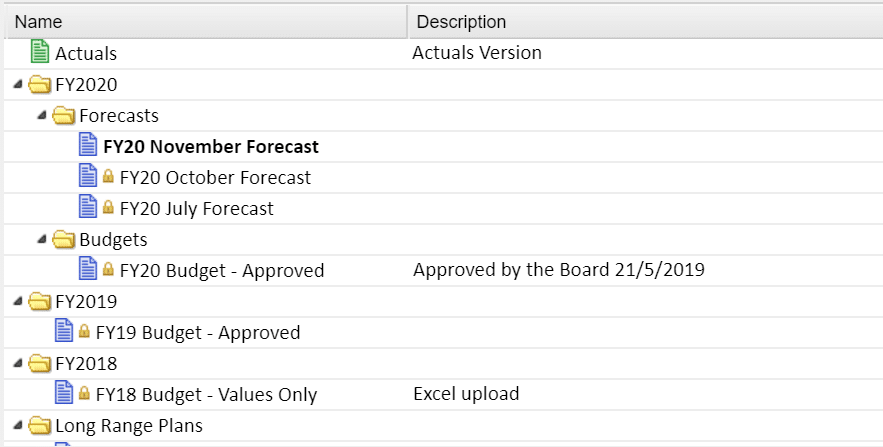
It is incumbent on the administrator to not just keep versions in an organised fashion, but to manage and review their settings from one plan period to the next. For example, see the tips below on the settings for retiring your active versions.
Retiring or archiving older versions
When versions are no longer used (eg, prior year budgets or forecasts) we recommend retiring them using the following settings:
Lock the version: This sets the version’s data and formulas to read-only.
Check ‘Calculate Formula Values’: Whilst the formulas cannot be edited once you lock the version, they still calculate each time that version is run in a sheet or report. This is to be avoided for two reasons:
- Formula calculations can be cumbersome, depending on the complexity and amount of formulas, and therefore can increase the load time.
- A formula in a locked version can still change values if the formula references prior actuals. Your Actuals version can be edited despite your plan version being locked, so if your formula references those actuals and they are retrospectively changed (eg, from a late journal adjustment), expect your formula to evaluate a different value when it recalculates.
Checking Calculate Formula Values will evaluate all formulas in the version and store the resulting values. It will then use those values when running a sheet or report, instead of relying on the formulas to recalculate.

For older versions that have become obsolete, consider hiding them to reduce clutter in your version drop-down. An efficient way to do this is to:
- Create a new folder at the bottom of your version tree and name it ‘Archive’.
- Under Access Control, select ‘Hidden’ for all categories.
- Drag and drop all unused versions into the folder.
Each version placed under the Archive folder will instantly become hidden from sheets and reports. This creates an easy, drag-and-drop process for handling your obsolete versions.
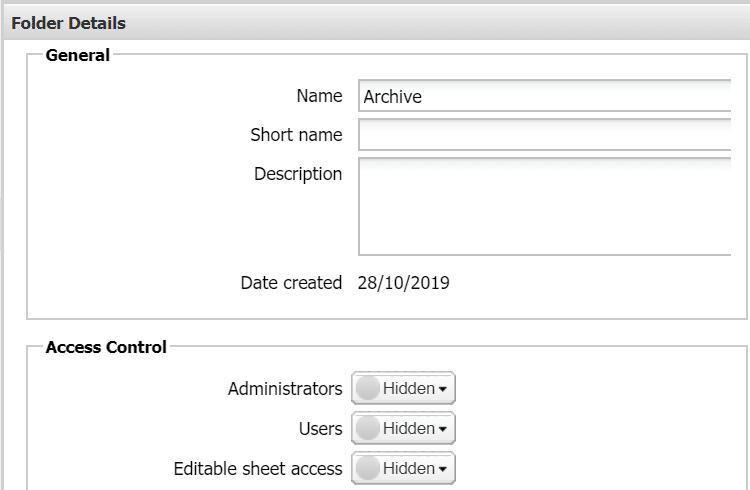
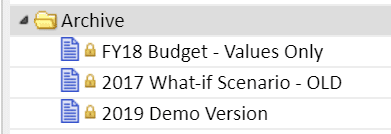
Beyond the standard settings of version, there are other features at your disposal which can be used to better enhance the planning experience for your users.
Define User Groups to create custom-access versions
The majority of active versions I come across, whether they are budgets, forecasts or what-if scenarios, are designed to be used for either:
- all users – both contributors and administrators; or
- administrators only
Whichever category your versions falls into, it is straightforward to achieve the desired level of access by tweaking the Access Control settings for Administrators and Users.
However, what if your version is in the minority? For example:
- A long-range targets version for the Executive team, who are doing their annual review.
- A what-if scenario for a single user, who is conducting analysis for a business case.
In these instances, Administrator and User access settings are too vague and will include users outside our target audience. Define User Groups to get around this issue!
- Go to Administration > Global User Groups > New Group and move the required users into your user group. For example, an Executive user group might look like the following:
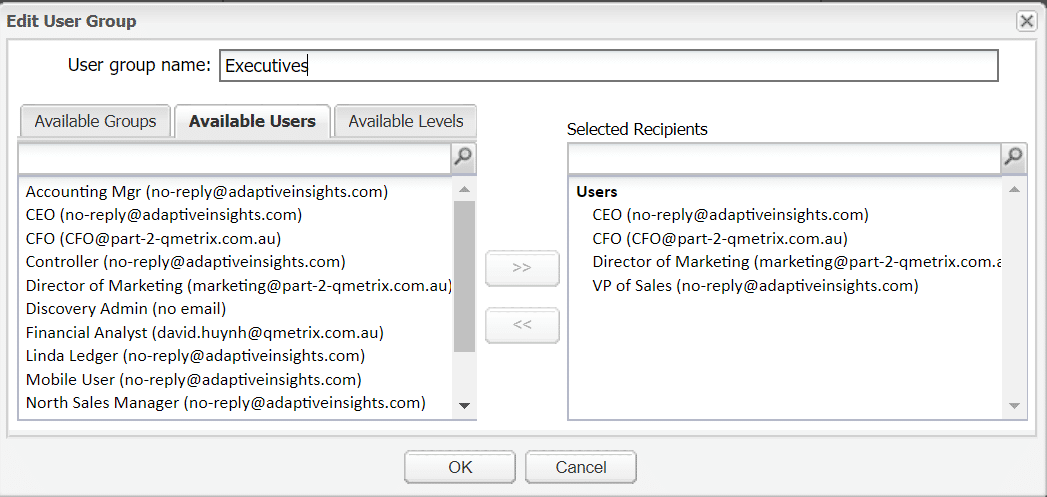
Click OK.
- Return to your version’s settings and select your user group from Access Control > Group.
- Grant the desired level of access to your user group, while leaving all other categories as ‘Hidden’.
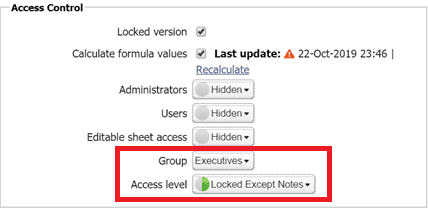
Your version will now be accessed only by the users defined in your user group. You can edit the members of this group at any time by returning to Administration > Global User Groups.
Use Virtual Versions to streamline report updates
A more common issue involving versions that I hear about is the pain of updating reports with the latest version when a new planning cycle begins.
Imagine your team of users is taking full control of Adaptive Insights’ Web Reporting portal. Amongst them, they have created over 50 operational reports which are used to compare actuals with the current monthly forecast.
Next month however, when a new forecast version is created, all the reports will suddenly become out of date. This creates the need to manually modify each one and update it with the latest forecast version.
There is a more efficient way to ensure your versions are up to date with the help of virtual versions.
Virtual versions were originally brought in to give users the ability to view data of an existing plan version (the ‘base’ version) translated using the exchange rates of another version (the ‘exchange rate’ version). This was particularly useful for multi-currency entities conducting FX analyses.
However, people soon realised that they can have a more generic but useful purpose – as version ‘variables’ that could point to your current plan version and then be used for reporting. Once a new plan period begins, you simply point your virtual version to your new plan version instead of modifying each report.
For example, imagine your current version is ‘FY20 November Forecast’, of which we would like to create a virtual version to use in reports:
- Navigate to Modeling > Versions.
- Click on the FY20 November Forecast From the toolbar at the top of your screen, click Create New Virtual Version.
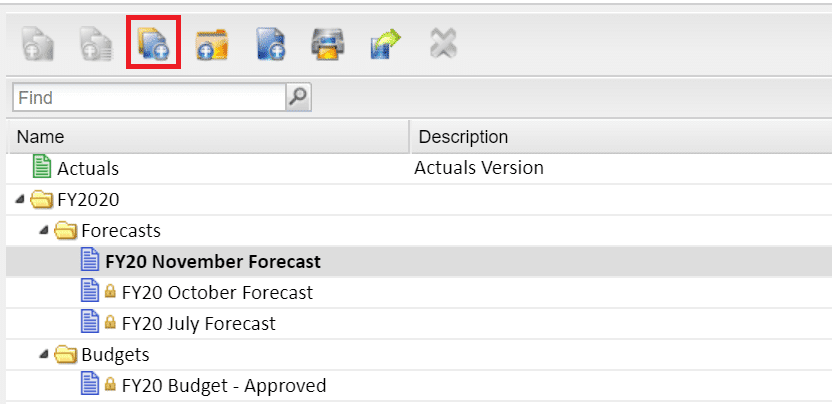
- Name your version Current Forecast. Review all other General and Access Control settings.
Select the base version to be the FY20 November Forecast. Same goes for the exchange rate version (disregard the offset options).
- Save.
Your new virtual version will now be available to add to all your existing reports. Replace all references to your FY20 November Forecast version with Current Forecast.
Once December arrives, and an FY20 December Forecast version has been created, simply edit Current Forecast’s base version and exchange rate version to point to the new version.
Automatically, all reports that reference Current Forecast will be updated with the latest version.

Not only is this a much quicker method of updating reports, it is more controlled and consistent. The process updates all reports simultaneously and is now left to administrators to manage, who are better positioned to know which is the current plan version.
Looking for more Adaptive Insights best practice tips?






